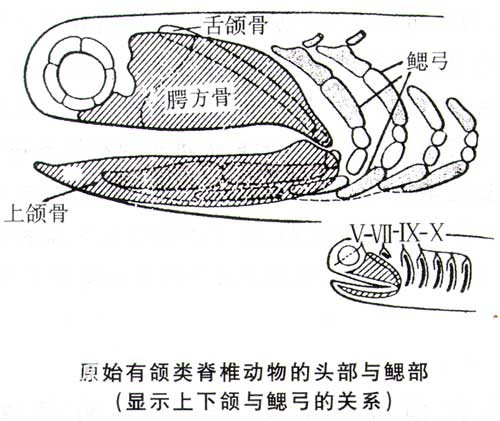In the history of biological evolution, some major events have occurred. The significance of these major events exceeds the sum of various general events. They are revolutionary in nature and profoundly affect the subsequent direction of evolution. The first such revolution since the emergence of vertebrates was the origin of the jaw.

origin of jaw
The process of evolution from earlier animals to later animals is actually completed by the transformation of their structures from one function to another. The jaw was transformed from some structures that originally performed functions unrelated to feeding.
Armored fishes have a large number of gills, which are supported by a series of skeletal structures. Each structure is composed of several bones and is shaped like a lying "V" with the tip pointing backward. Each such "V"-shaped structure is called a branchial arch. All the gill arches of primitive vertebrates are arranged in two horizontal rows on the left and right in a "V" shape: >>>>>>.
At a certain early stage of vertebrate evolution, the original two pairs of gill arches in the front disappeared, and teeth grew on the third pair of gill arches, which were hinged together by a joint structure at the tip of the "V" shape. In this way, the upper and lower jaws are formed that can open and close freely and effectively bite food.
Along with the emergence of upper and lower jaws, true even fins also began to appear on these primitive jawed vertebrates.
The most primitive gnathostomes discovered so far are placoderms (class). They first appeared in the late Silurian Period and flourished for a while in the Devonian Period.
animal tags: even-finned jaws
We created this article in conjunction with AI technology, then made sure it was fact-checked and edited by a Animals Top editor.